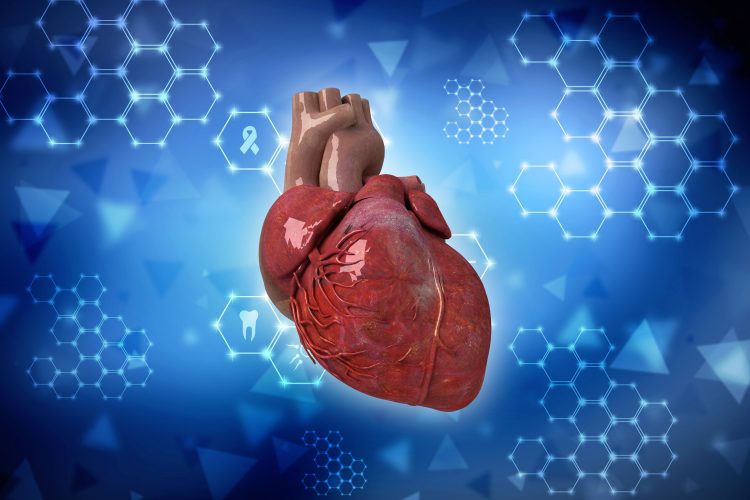Organs-on-a-chip model for breast cancer drug cardiac toxicity testing
Posted: 27 October 2020 | Hannah Balfour (Drug Target Review) | No comments yet
The newly developed chip includes heart and breast cancer tissues and could be used to predict the cardiac toxicity of chemotherapeutic drugs.


Researchers have created a dual organs-on-a-chip model for the development of potential breast cancer drugs. Breast cancer, the most commonly occurring cancer in women globally, is frequently treated with chemotherapy; however, these drugs have adverse side effects, the most serious of which is toxicity to the heart. In addition to causing tissue damage, chemotherapeutic breast cancer drugs can also affect the ability of the heart to contract and result in clinical heart failure.
In order to monitor the effects of chemotherapy on the heart, organs-on-a-chip models have been developed. These silicone chips contain live human tissues, supplied with oxygen and nutrient rich media. The molecules that the cells secrete into the surrounding medium act as biomarkers for the tissue’s health and function.
Recently, methods have been successful in creating simple systems to monitor heart toxicity from breast cancer drugs in single tissues, but to date there have been few attempts to produce such a system in a larger, more comprehensive and reliable model.
Collaborative research has led to the development of an organs-on-a-chip system that more widely examines the responses of breast cancer and heart tissues to therapeutic breast cancer drugs. For this system, the researchers incorporated breast cancer cells and heart tissue. They chose to measure two cardiac biomarkers which are produced by healthy heart cells and one biomarker that is produced by actively growing breast cancer cells.
In their study they tested their model with both healthy and artificially damaged heart tissues to mirror the possible heart conditions of breast cancer patients prior to chemotherapy.
The dual-chip system has two separate compartments, one for breast cancer cells and the other for heart tissue, connected by channels allowing the supportive media to flow. This circulating media ensured that the tissues received oxygen, nutrients and chemotherapeutic drug delivery.
“This work establishes an important model for monitoring cardiac toxicity from breast cancer chemotherapy,” said first author Dr Junmin Lee, part of the Terasaki Institute for Biomedical Innovation’s research team. “We successfully created cardiac and breast cancer tissues that closely mimic bodily tissues and developed an improved sensing device and drug delivery system; these are milestones in organs-on-a-chip technology.”
![Schematic of heart-breast cancer-on-a-chip. These organs-on-a-chip models consist of a silicone chip with compartments for culturing specific types of live human tissues. The compartments are connected to microfluidic channels through which oxygen and nutrient media are pumped and circulated [Credit: Khademhosseini Laboratory].](https://drug.russellpublishing.co.uk/wp-content/uploads/Heart-Breast-Cancer-on-a-Chip-750x397.jpg)
![Schematic of heart-breast cancer-on-a-chip. These organs-on-a-chip models consist of a silicone chip with compartments for culturing specific types of live human tissues. The compartments are connected to microfluidic channels through which oxygen and nutrient media are pumped and circulated [Credit: Khademhosseini Laboratory].](https://drug.russellpublishing.co.uk/wp-content/uploads/Heart-Breast-Cancer-on-a-Chip-750x397.jpg)
Schematic of heart-breast cancer-on-a-chip.
These organs-on-a-chip models consist of a silicone chip with compartments for culturing specific types of live human tissues. The compartments are connected to microfluidic channels through which oxygen and nutrient media are pumped and circulated [Credit: Khademhosseini Laboratory].
According to the team, in their chip it was found that when actively growing breast cancer cells communicated with heart tissue there was a reduction in the levels of healthy heart biomarkers than in other single-tissue chips. Moreover, the new chip system provided evidence that the breast cancer cells’ biomarker secretion was affected not only by drug treatment, but by their interaction with cardiac tissues with different levels of damage. According to the researchers, this indicates that the interplay between the heart and breast cancer tissues has an important influence on indicators of cell function and disease progression.
The team could not draw any definitive conclusions as to whether pre-damaged heart tissues were more susceptible to cardiac injury when exposed to breast cancer drugs; however, the results showed that in healthy cardiac tissues, delivery of the breast cancer drugs resulted in decreased cellular growth and secretion of healthy heart biomarkers than without the drug.
The team said that they may conduct further tests to predict the cardiac toxicity of chemotherapeutic drugs and also expand the model. Expansion projects could include observations of tissues cultured on a long-term basis, examination of additional biomarkers, testing the model using tissues derived from several patients and measurements of other, non-biomarker indicators of cardiac damage (eg, electrical and contractive functions). They also suggested that they could add a liver tissue component to the chip as a measure of hepatotoxicity.
Dr Ali Khademhosseini, director and Chief Executive Officer for the Terasaki Institute, US, concluded: “These efforts lay important groundwork that can pave the way to future applications in disease modelling. The Personalized Physiological platform that we have at our Institute is one of the many vehicles that we have for bringing personalised medicine to the real world.”
The paper was published in Small.
Related topics
Biomarkers, Cell-based assays, Drug Development, In Vitro, Oncology, Organ-on-a-Chip, toxicology
Related conditions
Breast cancer, cardiac dysfunction
Related organisations
Terasaki Institute for Biomedical Innovation
Related people
Dr Ali Khademhosseini, Dr Junmin Lee


